[/caption]
Have you ever seen a space launch from orbit ?
Check out the spectacular launch photo (above) of the Johannes Kepler ATV streaking skyward atop an Ariane 5 rocket as captured by astronaut Paolo Nespoli from his unparalleled vantage point looking out the windows aboard the International Space Station (ISS), in orbit some 350 km above Earth.
The launch photo shows the rising exhaust trail from the rocket just minutes after blast off of the Ariane booster on Feb. 16 from the ESA rocket base in Kourou, French Guiana, South America. The rocket was still on a vertical ascent trajectory to orbit. Additional launch photos below from space and Earth.
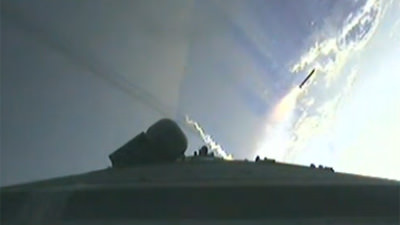
The photo vividly illustrates the maturity of the European space effort since the launch base, Ariane booster rocket, Kepler payload and astronaut Nespoli all stem from Europe and are crucial to the future life of the ISS.

Kepler is set to dock at the ISS on Feb. 24 and an on time arrival is essential because of an impending orbital traffic jam.
Space Shuttle Discovery is due to link up with the ISS just six hous after Kepler if the orbiter launches according to schedule on Feb. 22.
Everything is nominal with Kepler’s spacecraft systems and orbital performance at this time say European Space Agency (ESA) officials, including the deployment of ATV’s four large solar wings.
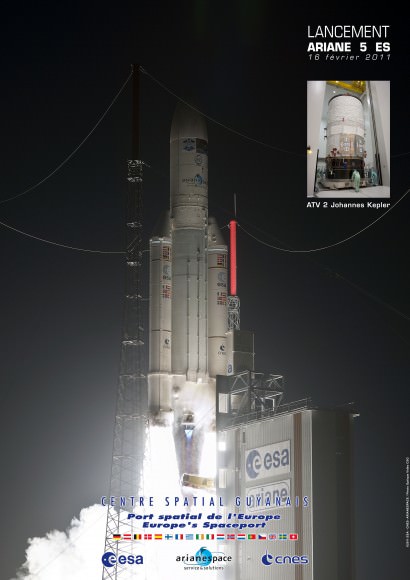
The ATV, or Automated Transfer Vehicle, is a European built resupply vessel designed to transport essential cargo and provisions to the ISS. It is Europe’s contribution to stocking up the ISS.
Kepler is carrying carries more than seven metric tons of supplies and cargo for the ISS and will be used to reboost the outpost to a higher orbit during its planned four month mission.
“ATV is a truly European spacecraft. Flying it requires experts from ESA, partner agencies and industry across half a dozen countries,” said ESA’s Bob Chesson, Head of the Human Spaceflight Operations Department.
“Getting it built, into orbit and operating it in flight to docking requires a lot of hard work and dedication from hundreds of people.”
The ATV is named after Johannes Kepler (1571-1630), the German astronomer and mathematician who is best known for discovering the laws of planetary motion. NASA also named its powerful new planet hunting space telescope after Kepler, which recently discovered the first earth sized planets orbiting inside the habitable zone.
After the shuttle is forcibly retired later this year in 2011, the very survival and continued use of the ISS will be completely dependent on a steady train of cargo and payloads lofted by unmanned resupply vessels including the ATV from Europe, HTV from Japan, Progress from Russia and commercial carriers such as SpaceX and Orbital Sciences.
Photos of Ariane rockets rising exhaust trail from Feb. 16 ATV launch photographed from the ISS. Credits: ESA/ NASA

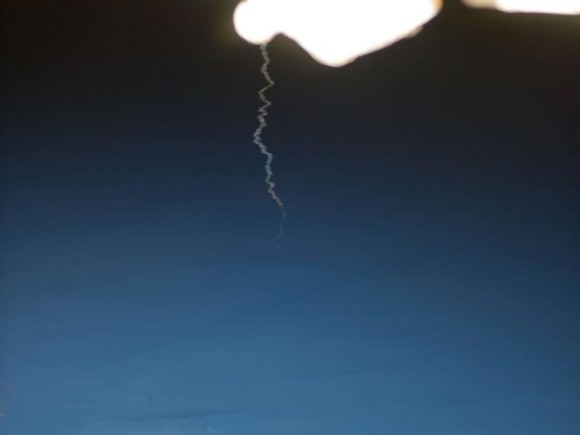
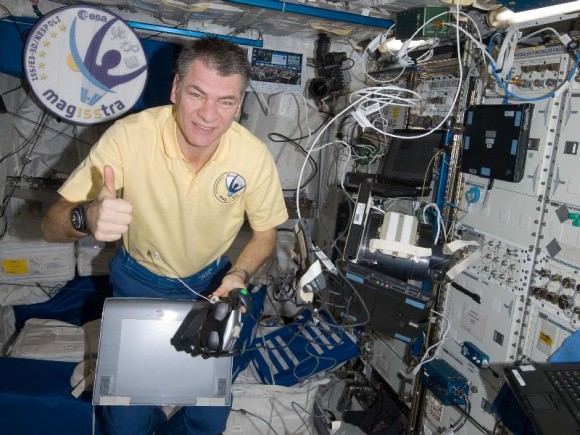

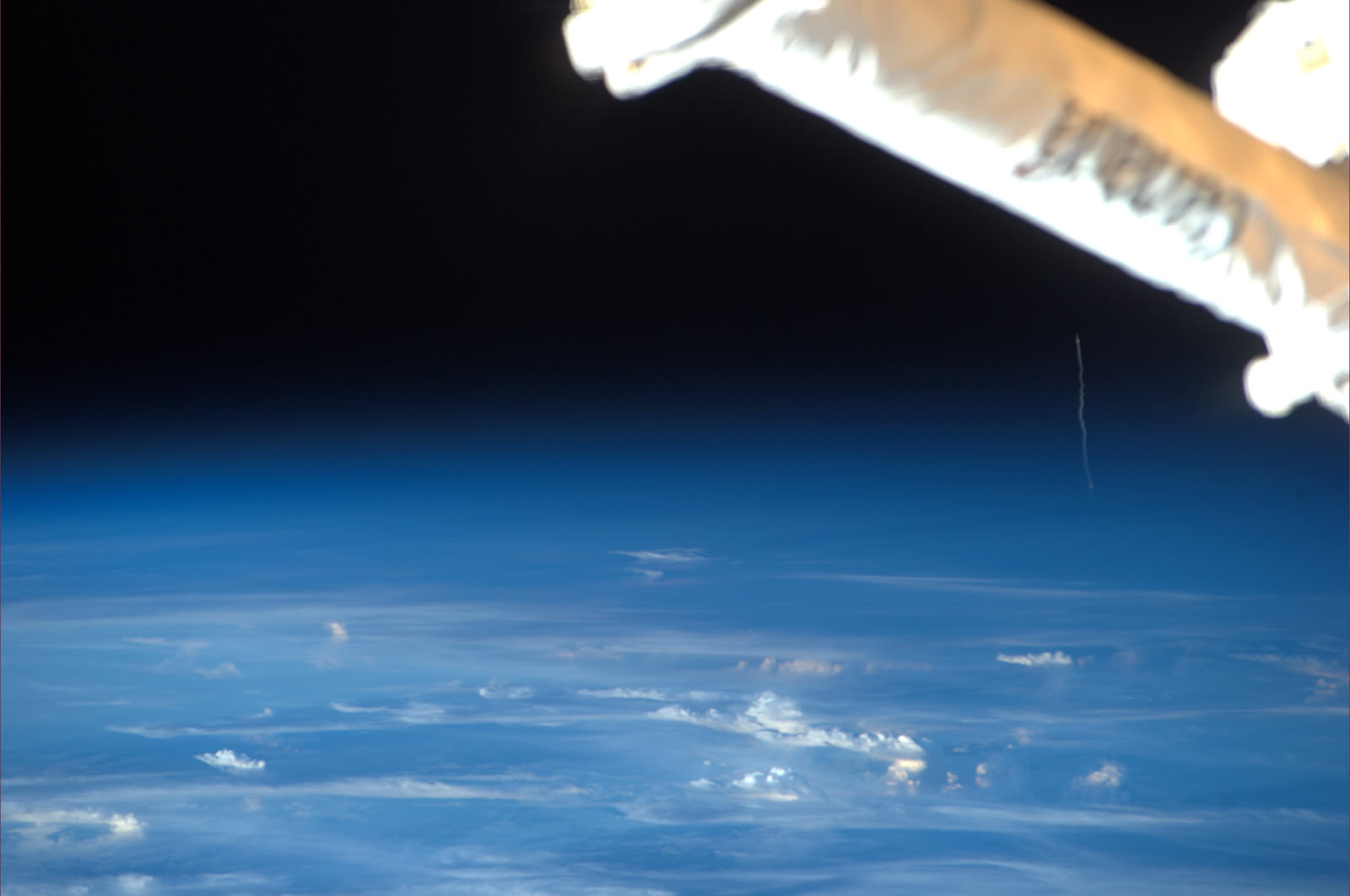

It is probably the skewed perspective of a low ISS, but the ability of high winds to pull on the contrail amazes me.
I would expect it to smoothly follow the launch trajectory at such heights that the atmosphere light scatter diminish. (Not that I have attempted an estimate of the correlation between scatter and leaving the viscous regime of winds, holiday and all.)
Which makes me thinking that those contrails may be used for atmosphere scientists checking out their models. Anybody know if that is done?
Oh no, the crazy random auto links are back. ;_;
Interesting observation. But, unlike Jet aircraft contrail, the nozzle of the rocket is used to steer its trajectory. It is tilting around constantly. This can cause irregular contrail.
Ah yes, thank you! And I believe I have made that mistake before, cogitating on this.
Some facts you need to be hit with repeatedly before they penetrate to the brain. :-/
No-o-o…? Now I seem to remember that I put someone _right_ on this a few weeks back. Eergh! Either way, it sucks to be my brain today.
Thank you ESA astronaut Paolo Nespoli! Great photography!